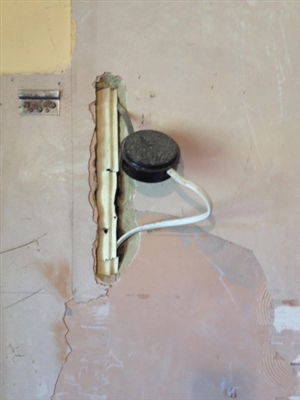
Sparkingchip:
Become it will be blanked off and concealed with plaster leaving absolutely no indication of where the CABLE DROP to it comes down the wall to it.
Therefore the cable drop is not in a permitted zone and it does not comply with the regulations.
mapj1:
That example is ugly but regs wise OK - after all the terminals are enclosed, the only wiring out of the direct route is surface visible, and it is readily accessible, so does not need to be maintenance free.
Chris Pearson:
Sparkingchip:
Become it will be blanked off and concealed with plaster leaving absolutely no indication of where the CABLE DROP to it comes down the wall to it.
Therefore the cable drop is not in a permitted zone and it does not comply with the regulations.Eh? ?
If you leave the socket in place, you keep the zones.
Sparkingchip:
Chris Pearson:
Sparkingchip:
Become it will be blanked off and concealed with plaster leaving absolutely no indication of where the CABLE DROP to it comes down the wall to it.
Therefore the cable drop is not in a permitted zone and it does not comply with the regulations.Eh? ?
If you leave the socket in place, you keep the zones.
Pay attention at the back of the class and read the question.
The new sink is going where the existing socket is, that is why the socket is being moved.
We're about to take you to the IET registration website. Don't worry though, you'll be sent straight back to the community after completing the registration.
Continue to the IET registration site